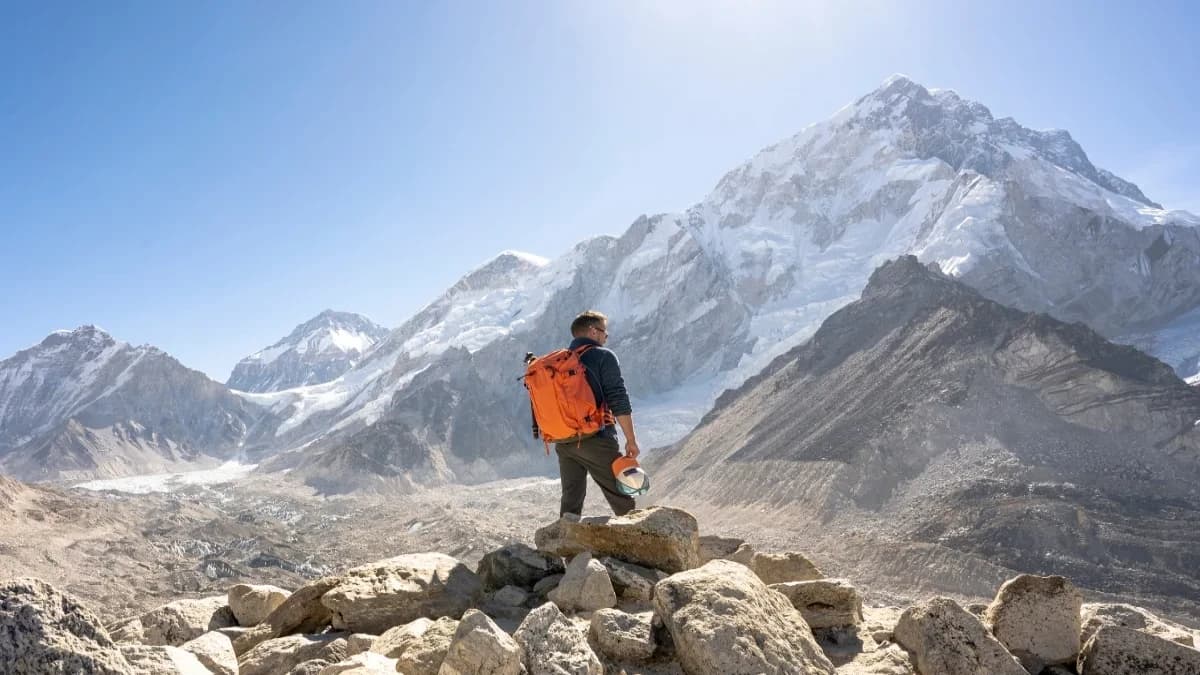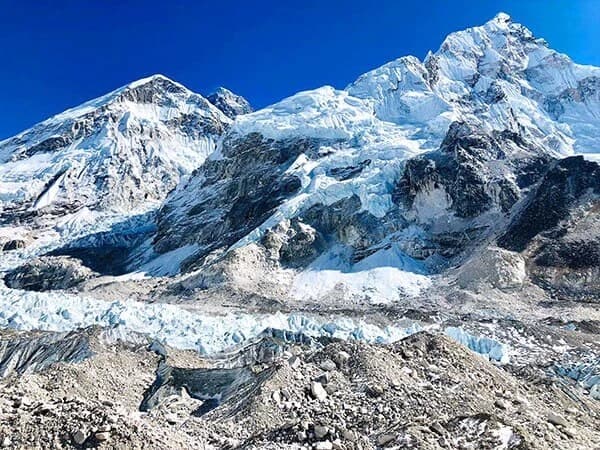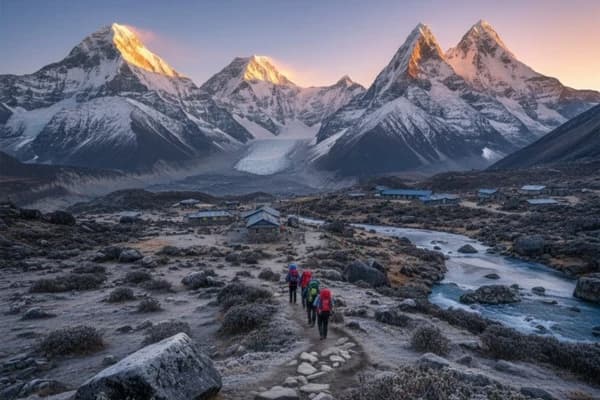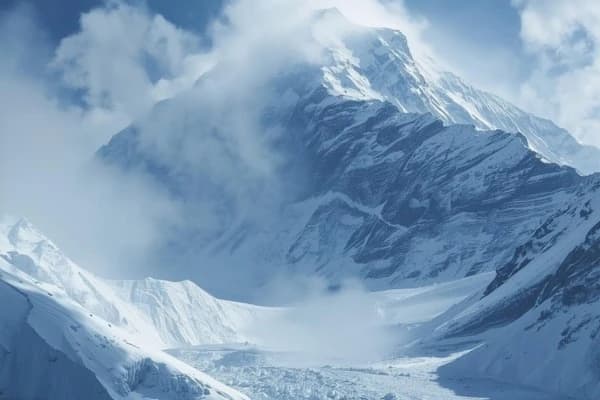Planning for the Everest Base Camp trek is exciting, but packing correctly is one of the most important steps to ensure a safe and comfortable journey. At high altitudes, temperatures fluctuate dramatically, and facilities along the trail are limited. This Everest Base Camp Packing List is designed to help you prepare for every trail, climb, and cold breeze, so you can focus on enjoying the breathtaking landscapes and rich Sherpa culture.
This guide covers all essential categories, from clothing and footwear to health, electronics, and seasonal gear. We also include practical tips for trekking in the Khumbu region, as well as local insights on permits, tea houses, and porter support.
Let’s explore Everest Base Camp packing list so you’re ready for every trail, climb, and cold breeze along the way.
Understanding the Everest Base Camp Trek Requirements
Before you start packing your stuff for the trek, it is better to know the trek in depth. Everest Base Camp Trek normally takes around 12 to 14 days and reaches the high altitudes of around 5,364 meters. Your journey to the EBC will start from Kathmandu, followed by a flight to Lukla. Lukla is where your trekking adventure starts, with stops like Namche Bazaar, Tengboche, Dingboche, and Gorak Shep in between before you reach the Everest Base Camp.
Accommodation along the route is mostly in tea houses, with porter and guide support widely available. Trekking here means navigating Sagarmatha National Park, home to some of the highest peaks in the world. Sherpa culture is deeply woven into the region, offering a unique cultural experience alongside the physical challenge.
The Everest Base Camp is a combination of high altitude passes and unpredictable weather. With limited lodging facilities as you go higher, you need a good Everest Base Camp packing list to survive the harsh weather in the higher mountains.
Don’t miss a thing! Use Nepal Gateway Trekking’s Everest Base Camp Packing List before you go.
Core Packing Categories for Everest Base Camp Trek
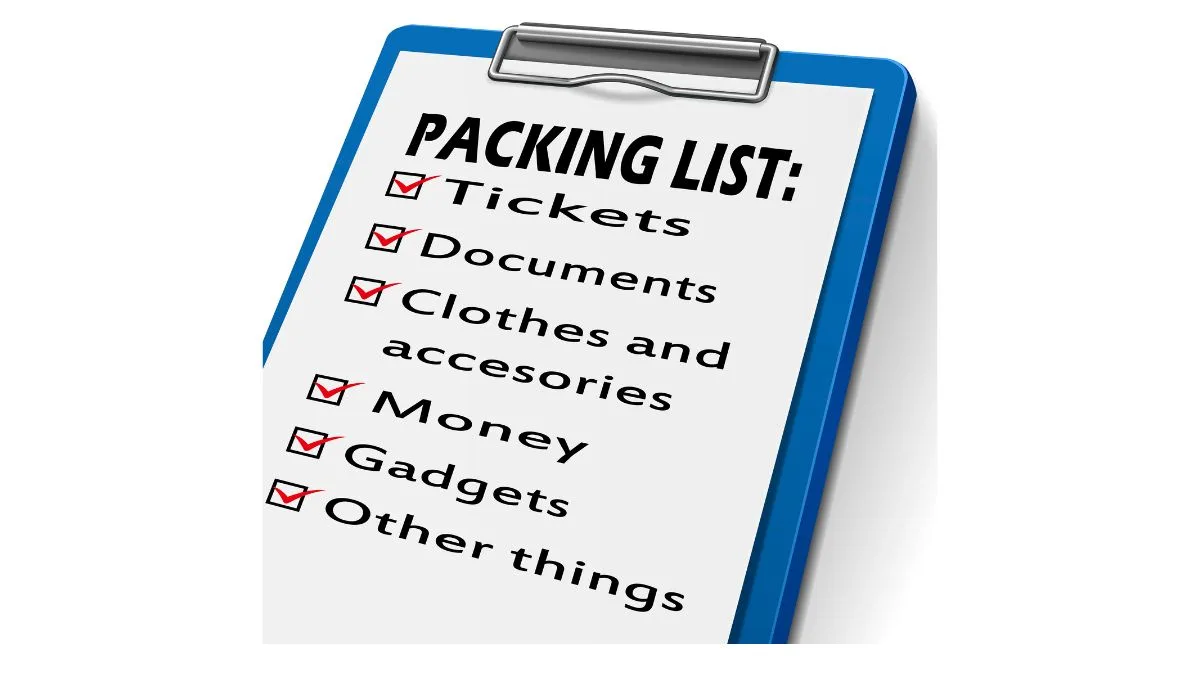
Backpack & Storage
The backbone of your trek begins with smart packing. A well-organized backpack helps you access essentials quickly and keeps the weight manageable.
- Daypack (30–50L) for daily essentials
- Duffel bag (65–100L) for porter luggage
- Rain covers and dry bags to keep items waterproof
- Organize by priority and keep your total load ≤12 kg for porter convenience
Using waterproof bags inside your duffel can protect sensitive electronics and documents, while a compact daypack ensures you carry only what you need for each day’s trek.
Clothing for Layering
Seasonal clothing is very important, as summer requires lighter layers while winter treks needs thicker insulation and heavy-duty gear. You should take note of layering your full body clothes for comfort and safety on your journey to the Everest Base Camp. Make sure you keep note on the Temperatures in the morning and evening as it changes drastically.
- Carry base layers like thermal tops and bottoms
- For mid layers, go with a fleece or a down jacket
- Outer layers should contain a waterproof cover, a windproof jacket, and trekking trousers
- Also carry trekking pants and shorts for seasonal weather
- The socks and gloves should be liner and outer
- Carry essentials like hats, buffs, and neck gaiters for sun and wind protection
Footwear
Breaking in boots well before the trek is crucial to prevent blisters and ensure long-lasting comfort. It is like softening the pads so that you get comfortable with the shoes.
- Trekking boots: waterproof, broken-in, supportive
- Camp shoes or sandals for evenings at tea houses
- Gaiters to protect against snow and debris
- Trekking socks designed for warmth and blister prevention
Sleeping Gear
Sleep is one of the most important factors when trekking. Getting enough rest and having the energy to continue the next day plays a vital role in your trekking journey.
- Sleeping bag rated -10°C to -20°C
- Sleeping bag liner and pillowcase for hygiene and added warmth
- Season and altitude influence sleeping bag choice; winter treks require thicker down, while summer treks may use lighter options
Which Type of Sleeping Bag to Bring for Everest Base Camp?
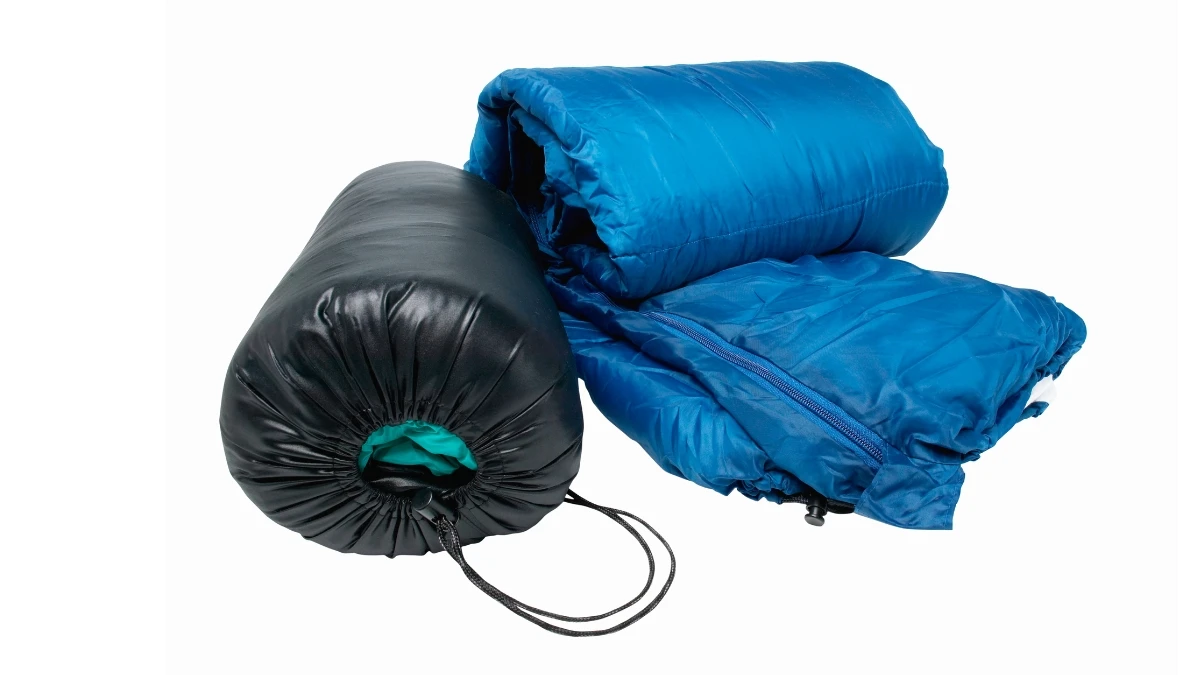
The type of sleeping bag you use on the Everest Base Camp will determine your proper rest for the day. Make sure the sleeping bag is seasonal with a temperature rating of atleast -20°C.
- Temperature rating of around -10°C to -20°C is suitable for all trekking seasons
- Choose between down or synthetic insulation. Down is lighter and warmer, whereas synthetic performs better in damp conditions
- A liner as well, as it adds warmth and keeps the sleeping bag clean
- Make sure to choose a sleeping bag that is easy to carry and fits in your duffel bag
Hydration & Nutrition
Staying hydrated is critical at high altitudes. It helps in preventing acute motioin sickness and keeps you energized throughout the day.
- A water bottle of 2L with purification tablets
- Carry snacks like energy bars, nuts, and dried fruits for whenever you need
- Drink water in small amounts but frequently, and monitor signs of dehydration or altitude fatigue
Health & Safety Essentials
Safety is always a priority in the Everest region. The EBC Trek is one of the popular treks, and many people undertake it every year. Therefore, taking care of your health and safety becomes essential so that you do not end your trekking journey halfway through.
- First aid kit: band-aids, blister treatments, antiseptic
- Personal medications: any regular prescriptions plus altitude sickness medicine (Diamox)
- Sunscreen and lip balm with SPF
- Hand sanitizer, wet wipes, toilet paper
- Acclimatization tips and frostbite prevention should be part of your daily routine
Electronics & Accessories
Electronics can make your trek more enjoyable, but they require proper planning. A hasty decision to bring electronics without any safety net for these devices can cause them to malfunction in sudden rain. Though a few things you can get are:
- Headlamp + extra batteries for light at night time
- Power bank and charging cables in case of no charging station
- Trekking poles for support during the trek
- Sunglasses with UV protection
- Trekking map or guidebook with compass
Miscellaneous Items
Here are some additional items that enhance convenience and safety.
- Notebook and pen for journaling your adventure
- Trash bags to keep the trash with you and not litter the nature, following Leave No Trace principles
- Plastic or dry bags for waterproofing your electronics and other stuff
Seasonal & Condition-Specific Gear List For Everest Base Camp Trek
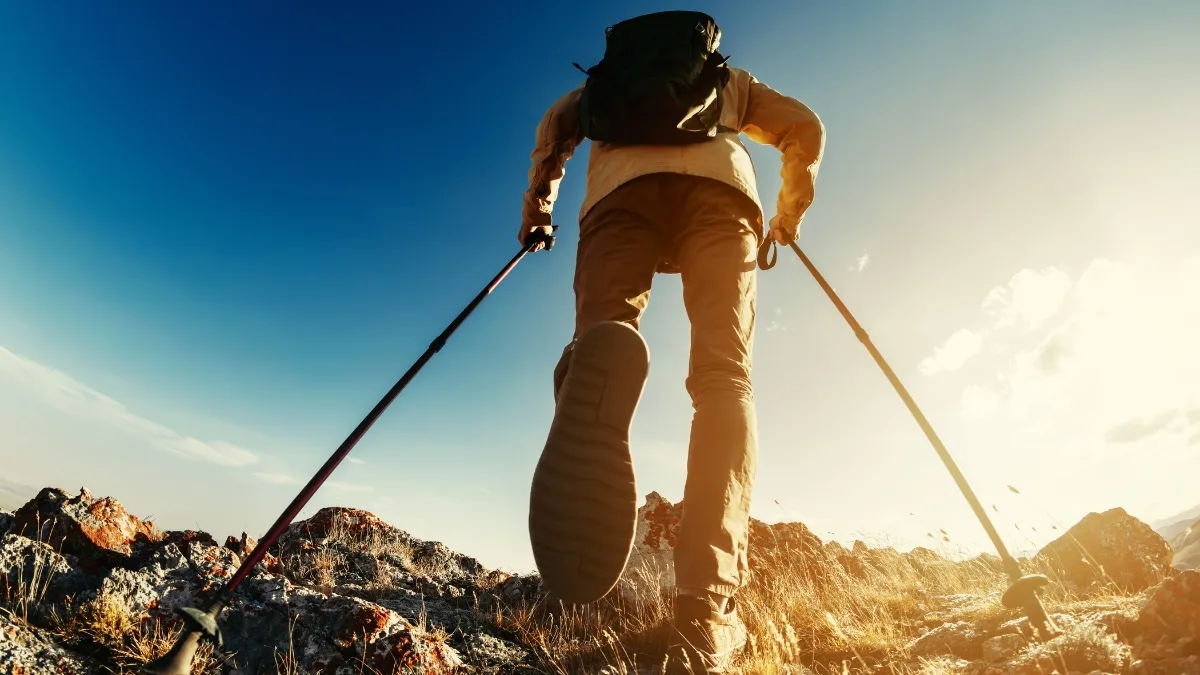
The Everest Base Camp packing list is not a one-size-fits-all task. Conditions on the trail can change drastically depending on the season and altitude. The summer season is the season for heavy rain with mild temperatures, whereas winter brings in snowfall and can be very cold.
Summer Trek Essentials
- Lightweight, breathable clothing for warmer daytime temperatures
- Waterproof rain jacket and pants for sudden showers
- Hat, sunglasses, and sunscreen for sun protection
- Layered clothes for morning and evening, as it gets colder at that time
- Boots comfortable for wet trekking routes
Winter Trek Essentials
- Heavy down jackets for extreme cold in the higher altitudes
- Thick gloves, socks, and insulated hats
- High-rated sleeping bag for sub-zero temperatures
- Thermal base layers for added warmth
- Footwear with extra insulation and gaiters for snow
Start your EBC adventure fully prepared – check your packing list now with Nepal Gateway Trekking!
Paperwork & Money
Proper documentation and financial preparation makes sure you have a smooth Everest Base Camp trek. For the Everest Base Camp Trek, you will need permits like TIMS card and Sagarmatha National Park permit to access protected areas. You also need a high altitude insurance (atleast upto 5,500 meters) with helicopter evacuation in case of an emergency.
- Trekking permits like the TIMS card and the Sagarmatha National Park entry permit
- Passport and ID available to you at all times
- Travel insurance covering high-altitude trekking
- Some cash in NPR for tips, food, lodging, and emergencies
- Document copies as a backup
- Can use an ATM card in some towns, but no ATM is available in the upper remote areas
Packing Tips & Strategies For Everest Base Camp
Smart packing can make the difference between a comfortable trek and a stressful one. At high altitude, weight limits for porter-assisted treks are strict, temperature fluctuations are extreme, and access to supplies is limited.
- Keep your baggage weight light and maintain a maximum weight of 12 kg for porter assistance.
- Prioritize first aid and personal safety items to handle minor injuries or altitude issues.
- If carrying it from home is impractical, buy or rent heavy gear in Kathmandu.
Get ready for the Himalayas - organize your gear with our local expert tips. Inquire today!
Rent Gear in Nepal
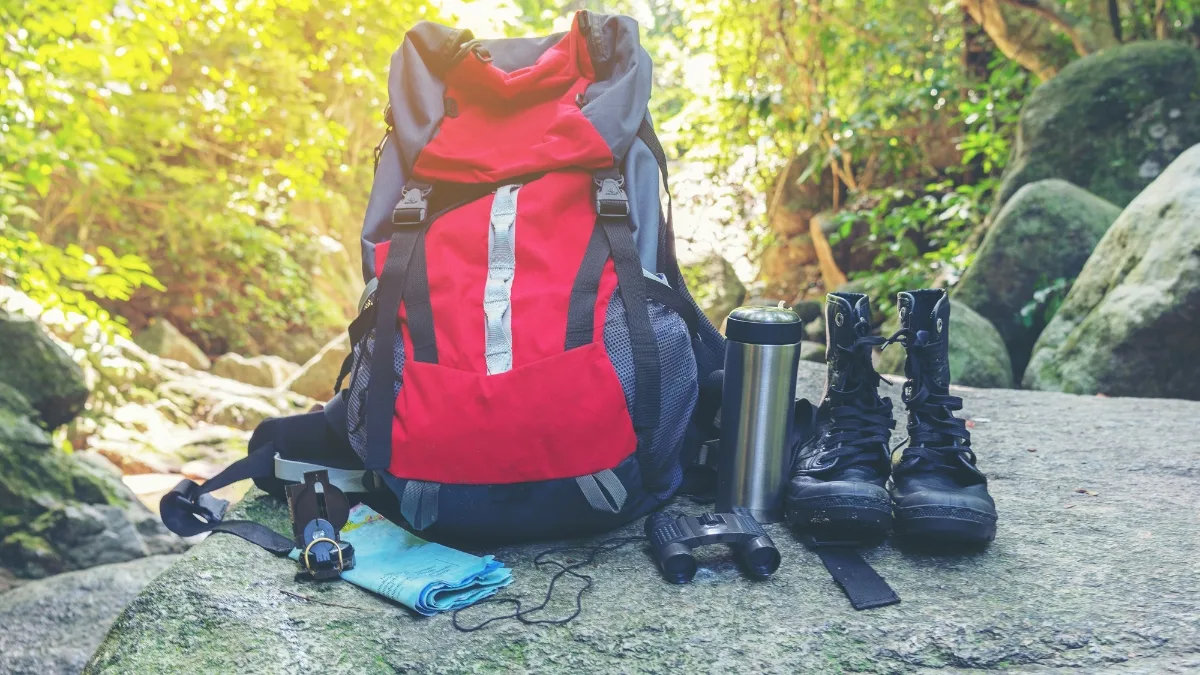
Some gear is heavy or costs a lot to bring from home, so renting it there can make your trek easier and lighter. When you rent, you can get good-quality gear made for high-altitude treks without worrying about carrying it from another country.
Gear to Rent and Tips:
- You can rent sleeping bags, trekking poles, gaiters, and jackets from trusted shops in Kathmandu or Lukla.
- Pick your rental gear carefully to make sure it’s warm enough and strong for the trek.
- Renting is easier for big or pricey stuff, but buying is better if you want a perfect fit or plan to use it again later.
Stepwise Packing Guide
Packing your gear step by step helps you stay organized and makes sure you don’t forget anything important. Doing it in order also helps you manage the weight and find things easily, which is important for a safe and comfy Everest Base Camp trek.
Packing Steps:
- Start with your backpack and storage essentials, making sure they are waterproof and well-organized.
- Pack your clothes in layers. Start with base layers, then mid-layers, and finish with outer layers.
- Don’t forget your shoes and gaiters. Make sure your boots are already broken in and pack enough socks for each day.
- Add your sleeping gear and things for staying hydrated, like water filters and a good sleeping bag.
- Pack health and safety items, electronics, and small extras like notebooks or trash bags.
- Change your gear based on the season - bring heavier or lighter clothes as needed.
- Keep your permits, cash, and travel papers in a spot that’s easy to reach in your bag.
Final Thoughts
Packing the right gear keeps you comfy and worry-free on the Everest Base Camp trek. Layered clothes, sturdy shoes, sleeping gear, water tools, and health items are all really important. Adjusting them for the season and altitude helps you stay prepared the whole trek.
Keep your backpack lightweight and organized, and prioritize items that matter most for safety and comfort. Creating a personal checklist helps you stay organized and stress-free. Start your checklist today to make your Everest Base Camp adventure smooth and memorable.
Pack smart, trek safe – grab your ultimate Everest gear guide today. Contact Nepal Gateway Trekking!
FAQ
What permits do I need for the Everest Base Camp trek?
You need a TIMS card and a Sagarmatha National Park entry permit. These permits allow legal access to the Khumbu region and are mandatory for all trekkers.
How long does the trek typically take?
The Everest Base Camp trek generally takes 12-14 days. This includes acclimatization days in Namche Bazaar and Dingboche .
What clothing should I pack for EBC?
Your Everest Base Camp packing list should include thermal base layers, fleece or down mid-layers, and waterproof outer layers. Add hats, gloves, and neck gaiters for high-altitude protection, adjusting for summer or winter conditions.
Do I need my own sleeping bag?
It’s better to bring your own sleeping bag to stay clean and warm. Pick one that works for -10°C to -20°C. If you don’t have one, you can rent a good sleeping bag in Nepal.
What essential gear should I bring for the trek?
Essential Everest Base Camp trek gear includes trekking boots, layered clothing, sleeping gear, water purification tools, trekking poles, first aid items, sunscreen, and a small daypack for daily essentials.
How should I pack my backpack efficiently?
Use the EBC gear checklist to organize items by priority, keep weight under 12-15 kg for porter assistance, and use dry bags to protect clothing and electronics from moisture.
Can I rent trekking gear in Nepal?
Yes, you can rent sleeping bags, trekking poles, gaiters, and jackets from reputable shops in Kathmandu or Lukla, which helps reduce your baggage weight.
Are guides necessary for the EBC trek?
Guides aren’t a must, but they’re really helpful if it’s your first trek. They help you find the right path, get used to the high altitude, and stay safe.
Is travel insurance required?
It’s a really good idea to have travel insurance. Make sure it covers high-altitude trekking, medical problems, and emergency rescue.
How do I prevent altitude sickness on the trek?
Go slow to get used to the altitude, drink plenty of water, don’t push yourself too hard, and only take medicine like Diamox if your doctor says so. Watch out for signs like headache, feeling sick, or getting really tired.
